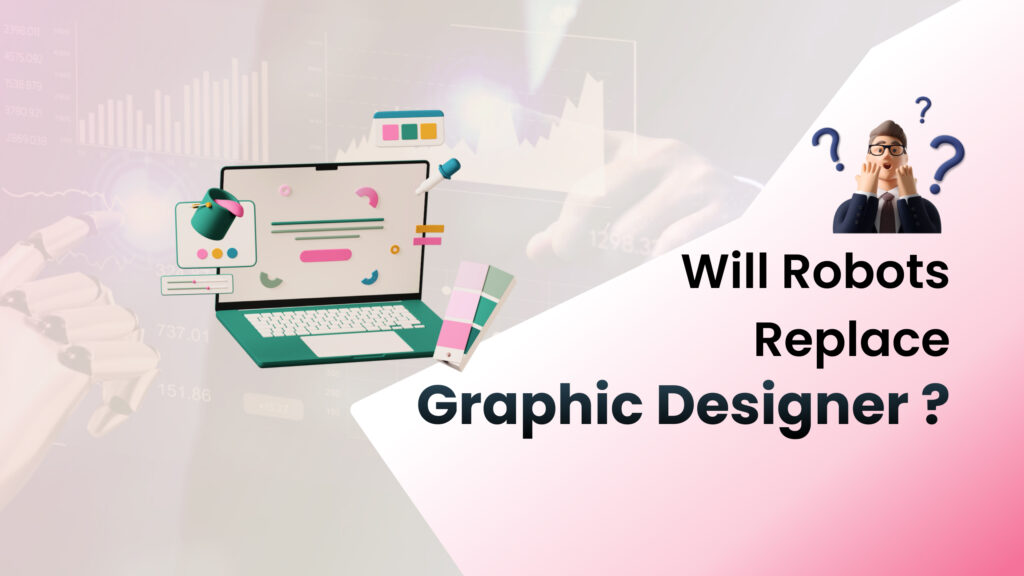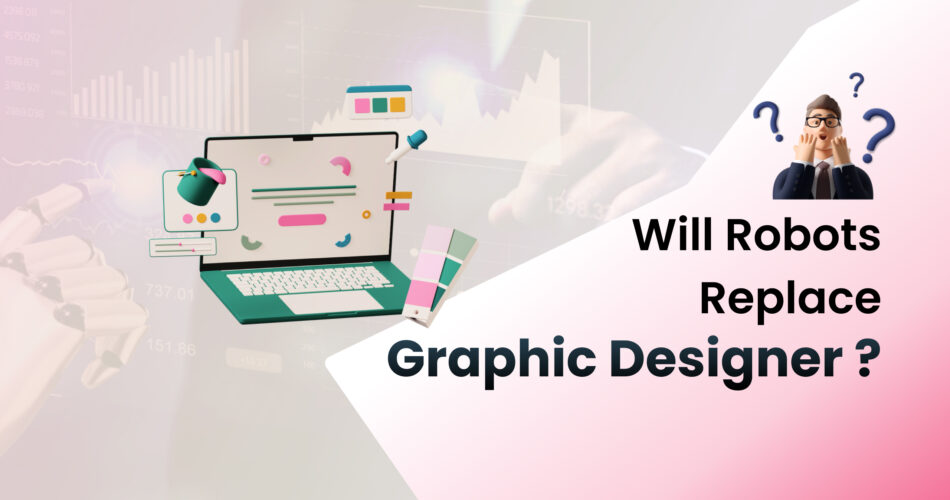
As advancements in artificial intelligence and machine learning continue to transform various industries, there’s a growing concern among creatives about the future of their professions. One question that has been on everyone’s mind is whether robots will replace graphic designers. In this blog post, we’ll explore how AI is currently being used in the creative industry, its benefits and limitations, and what the future might hold for human designers. Join us as we dive into this exciting topic!
Introduction: What is Artificial Intelligence (AI)?
In recent years, there has been a growing interest in the role that artificial intelligence (AI) might play in the creative industries. Some have suggested that AI could eventually replace human creative workers, such as graphic designers, while others believe that AI will simply supplement and augment the work of humans.
So what is AI, and what potential does it have for the field of graphic design?
At its most basic level, AI can be defined as computer systems that are able to carry out tasks that would normally require human intelligence, such as understanding natural language or recognizing objects. AI has been used in a variety of fields for many years now, but its potential applications in the creative industries are only just beginning to be explored.
Some believe that AI will eventually be able to create original works of art or design, while others think it will simply be used to automate repetitive tasks. However, it is still early days for AI in the world of graphic design, and its precise role in the future remains to be seen.
The Role of AI in Graphic Design:
In recent years, there has been a lot of talk about the role of artificial intelligence (AI) in various industries, including the creative industry. Some people believe that AI will eventually replace human workers in many industries, including graphic design.
However, it is important to remember that AI is not capable of creating original content. Rather, AI is best suited for completing repetitive tasks quickly and efficiently. For example, an AI can be used to generate multiple versions of a design faster than a human designer could.
In the end, it is up to the human designer to decide which version of the design is best. AI can help speed up the design process, but it cannot replace the creativity and innovation of a human graphic designer.
Pros and Cons of Using AI in Graphic Design:
Artificial intelligence (AI) is increasingly being used in various aspects of graphic design, from simple tasks like image editing to more complex ones like creating original artwork. While AI can be a helpful tool for designers, there are also some potential drawbacks to using it.
Some of the pros of using AI in graphic design include:
• Increased efficiency: AI can help speed up the design process by automating certain tasks that would normally take designers longer to do manually.
• Greater accuracy: AI can sometimes produce more accurate results than human designers, particularly when it comes to repetitive tasks such as color correction or an image retouching.
• More creativity: Some AI systems have been designed specifically to generate new ideas and concepts for designers to work with. These systems can help spark creativity by exploring possibilities that humans might not think of on their own.
However, there are also some potential cons to using AI in graphic design, such as:
• Less personalization: One drawback of using AI is that it can sometimes lead to less personalized designs. This is because AI systems often rely on pre-set rules and parameters, rather than taking into account the specific needs and preferences of individual clients or projects.
• Higher costs: Although AI can save time and increase efficiency, the cost of implementing AI systems into a graphic design workflow can be prohibitive for some businesses. Additionally, many AI services are currently only available on a subscription basis, which adds ongoing costs
The Impact of AI on Human Creativity and Employment
In recent years, there has been a growing interest in the potential impact of artificial intelligence (AI) on human creativity and employment. With the rapid development of AI technologies, some have raised concerns that robots may eventually replace humans in many jobs, including graphic design.
However, it is important to note that AI is not currently capable of completely replacing humans in the creative field. While AI can be used to automate certain tasks, such as image recognition or layout generation, the creative process still requires human input and creativity. In other words, AI can assist humans in the creative process, but it cannot replace them entirely.
That being said, it is possible that AI could have a significant impact on the employment landscape in the future. For example, if businesses increasingly rely on AI to generate designs or create content, there could be less demand for human designers or writers. As such, it is important to consider how AI might impact employment opportunities for creatives in the future.
Strategies for Succeeding at Graphic Design With or Without AI
There are a number of strategies that graphic designers can use to succeed with or without AI. First, it is important to keep up with the latest trends in technology and design. This means staying abreast of new software developments and being willing to learn new tools and techniques. Additionally, graphic designers need to be able to adapt their designs to the ever-changing demands of clients and consumers. They must also be able to work well under pressure and meet deadlines.
Furthermore, communication skills are critical for success as a graphic designer. Good communication allows designers to effectively convey their ideas to clients and co-workers. Additionally, strong writing skills are important for creating clear and concise briefs and proposals. Finally, it is also important for graphic designers to be proactive and take initiative on projects. By being proactive, designers can show their value to clients and employers and differentiate themselves from the competition.
What will be the Future of Graphic Design in 2025?
In 2025, the future of graphic design will be heavily reliant on artificial intelligence (AI). With the help of AI, graphic designers will be able to create more realistic and lifelike images. Additionally, AI will be able to help with the creation of 3D images and animation. This will allow for more realistic and lifelike designs that can be used in a variety of industries.
With the help of artificial intelligence (AI), many tasks that graphic designers currently do will be automated. For example, AI can already create basic designs based on a set of parameters. This means that in the future, a graphic designer’s job will be more about working with clients to understand their needs and coming up with concepts that AI can then execute.
Some people may think that this means robots will replace graphic designers. However, this is not the case. Graphic designers will still be needed to provide creativity and innovation that machines cannot replicate. In fact, AI may even help graphic designers be more productive and efficient in their work. So while the role of graphic designers will change in 2025, they will still be an important part of the creative industry.
Conclusion: What Does the Future Hold for Graphic Designers?
As the world of technology rapidly evolves, so does the role of graphic designers. With the advent of artificial intelligence (AI), some have speculated that robots will eventually replace human designers altogether. However, it is more likely that AI will simply augment the work of designers, rather than replace them entirely.
Design is a highly creative field that requires both artistic talent and technical skills. Robots can certainly be programmed to create designs, but they are not yet capable of replicating the creative process that human designers use to generate original ideas. In addition, even the most sophisticated AI systems still require a lot of input and direction from humans in order to produce results that are actually usable.
So for now at least, it seems safe to say that robots won’t be replacing graphic designers anytime soon. But as AI continues to develop and become more sophisticated, it is likely that the role of graphic designers will change and evolve as well.

